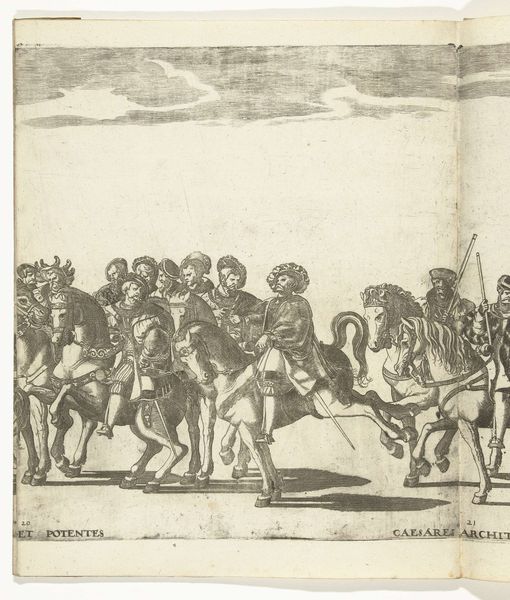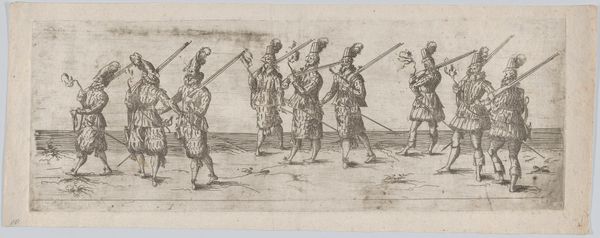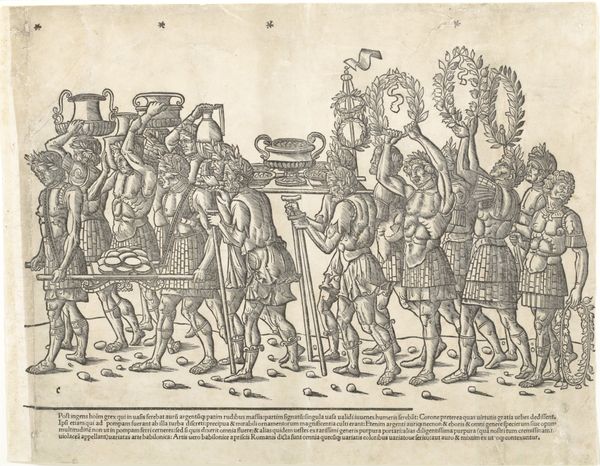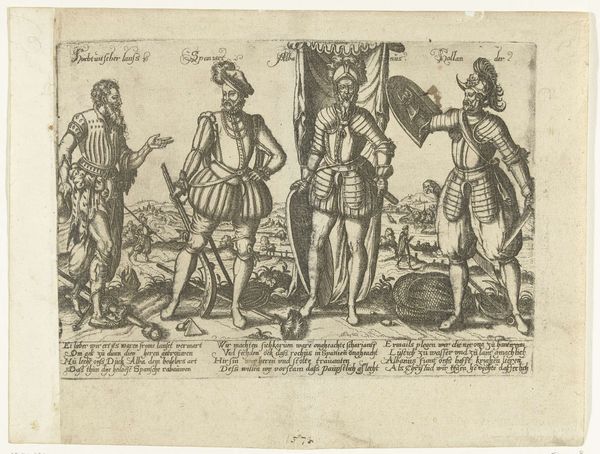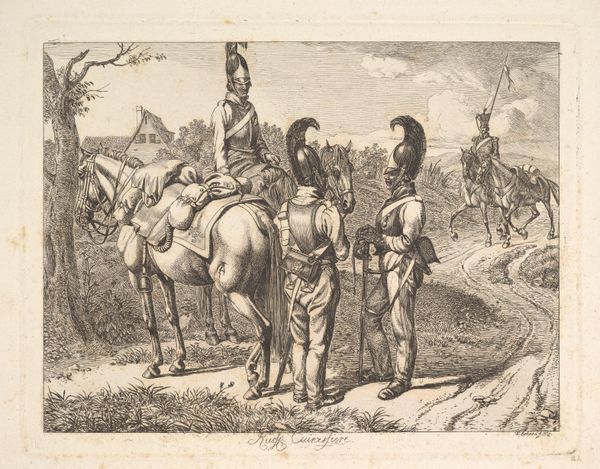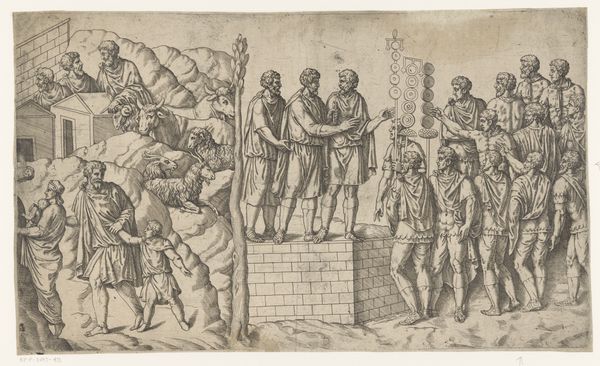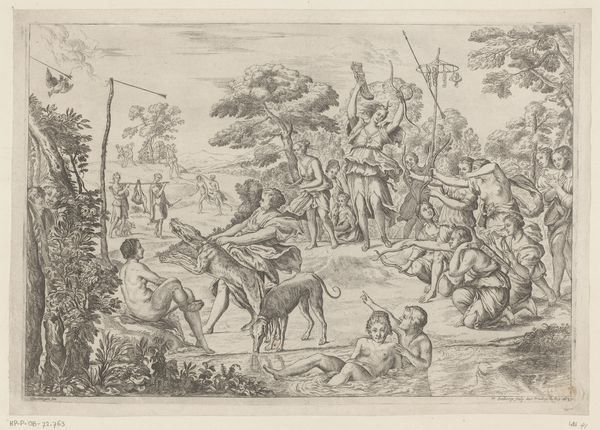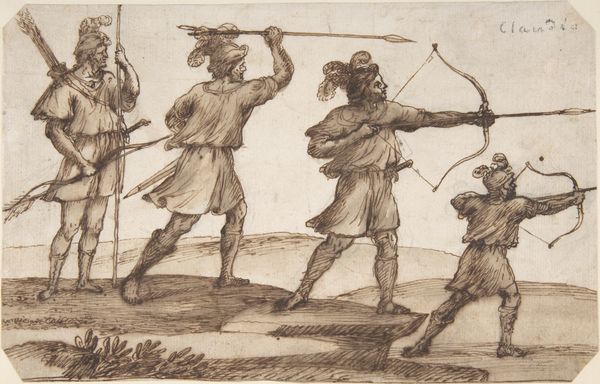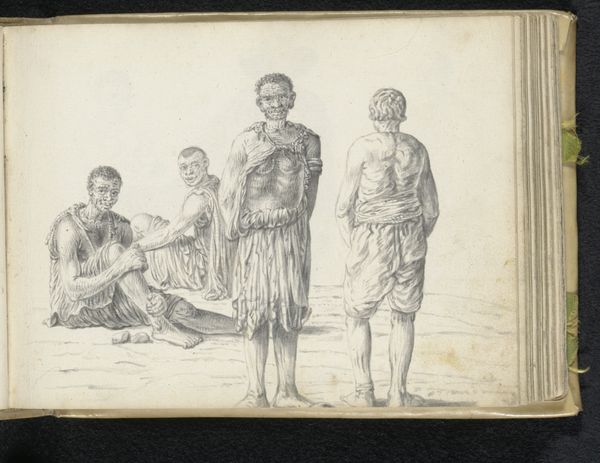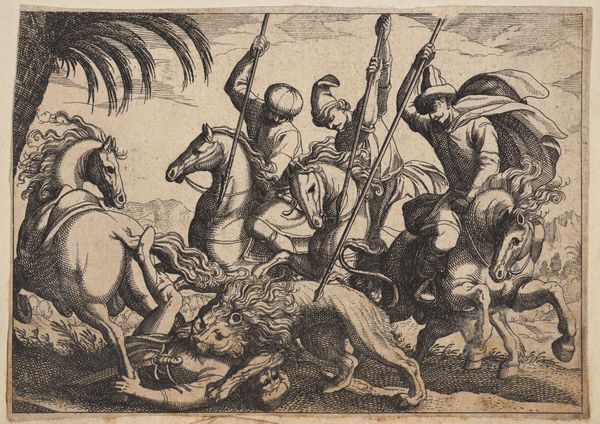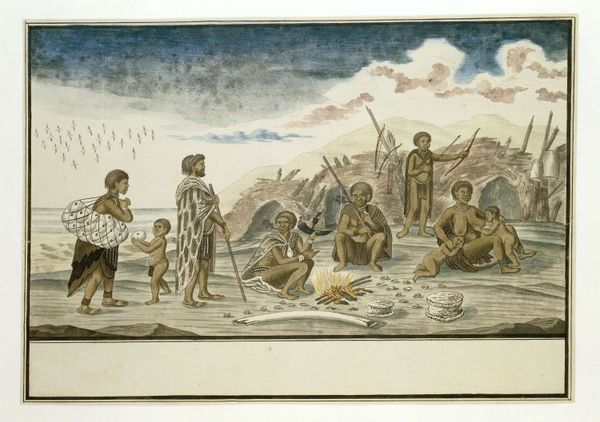
Copy of The King of Colchin, from "Set of Exotic Races" 1511 - 1600
0:00
0:00
drawing, print, woodcut
#
drawing
#
narrative-art
# print
#
figuration
#
woodcut
#
history-painting
#
northern-renaissance
Dimensions: Sheet (trimmed): 9 5/8 × 10 3/16 in. (24.5 × 25.8 cm)
Copyright: Public Domain
Curator: Hans Burgkmair’s "Copy of The King of Colchin, from 'Set of Exotic Races'," dating sometime between 1511 and 1600, offers a glimpse into Renaissance European perceptions of other cultures. It's currently held at the Metropolitan Museum of Art. What's your immediate reaction to this image? Editor: Well, first off, there’s a disquieting starkness to it. A crude, almost ethnographic study done in woodcut. It feels clinical and strangely removed, yet these figures also feel... animated, almost restless. Curator: Animated is a perfect word! Burgkmair was commissioned by Emperor Maximilian I to create these images for a grand illustrated manuscript depicting people from various parts of the world. It makes you wonder about the process behind making such a manuscript. Editor: Absolutely. Think of the woodcut process. Someone had to translate initial sketches or descriptions into these hard, delineated lines on a block, essentially manufacturing "otherness" for consumption. You can see it in the consistent crosshatching to create shadow and volume across each of the figures’ bodies. Curator: I wonder if Burgkmair ever questioned the implications of constructing these images, even for the purpose of documentation. Do you sense an implicit viewpoint, or something less definable? Editor: It’s hard to say with Burgkmair himself. The rigid, descriptive style almost implies objectivity but it's impossible for an artist to be truly objective. He chose what to emphasize, what to include or omit. It looks almost formulaic when examining it in the frame of the “other,” using his figures to show his European contemporaries this romanticized view of an "exotic" land. Curator: It makes me consider our contemporary perspective, critiquing past viewpoints, knowing that what we think of this artwork may be critiqued in the future, too. I find that endlessly interesting! Editor: Right! Thinking about this today, understanding the production, materials, labor – it completely reshapes how we read images like Burgkmair's. The historical context clashes with our modern sensibilities. Curator: Well said. I leave this viewing a little more uneasy than before, in the best possible way. Editor: For sure! It reveals so much when we view such work in its production processes. We reveal both the past and our current time through its making.
Comments
No comments
Be the first to comment and join the conversation on the ultimate creative platform.
